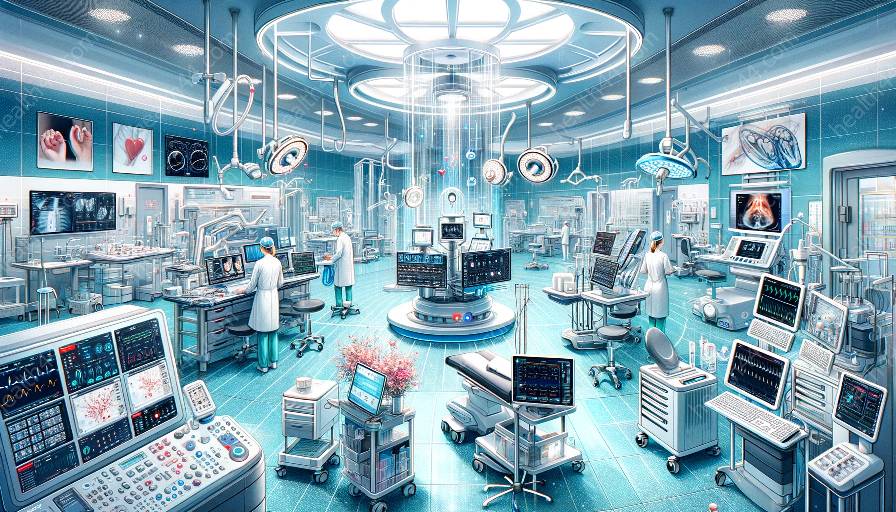As important fields in the medical and healthcare industries, bioengineering, tissue engineering, and regenerative medicine have the potential to drive significant advancements in the development of medical devices. By understanding how bioengineering can contribute to tissue engineering and regenerative medicine, we explore a compelling integration of technology and biology that promises transformative solutions.
Bioengineering and Tissue Engineering
The field of bioengineering encompasses the application of engineering principles and techniques to biological systems, providing a unique perspective to address complex medical challenges. Tissue engineering, on the other hand, focuses on creating functional biological tissues or entire organs by combining scaffolds, cells, and signaling molecules, for transplantation and regenerative medicine purposes.
The integration of bioengineering principles in tissue engineering offers novel approaches to the design and development of biomaterials, bioreactors, and manufacturing processes. By leveraging bioengineering techniques such as computer modeling, 3D printing, and microfluidics, researchers can optimize tissue engineering processes, resulting in improved functionality and compatibility of the engineered tissues with the human body.
Contribution of Bioengineering to Tissue Engineering
Bioengineering contributes to tissue engineering by enabling the precise manipulation of cellular behavior, the design of biomaterials with tailored properties, and the development of advanced bioreactor systems for tissue growth and maturation. Bioengineers apply their expertise in biomechanics, biomaterials, and molecular biology to create biocompatible scaffolds that mimic the architectural and mechanical properties of native tissues, promoting cell adhesion, proliferation, and differentiation.
Furthermore, bioengineers utilize advanced imaging techniques, such as magnetic resonance imaging (MRI) and confocal microscopy, to visualize and monitor tissue development in real time, allowing for dynamic optimization and control of the tissue engineering process. Additionally, bioengineering methodologies facilitate the incorporation of growth factors and cytokines into biomaterials, enhancing their regenerative potential and promoting tissue integration upon transplantation.
Regenerative Medicine and Bioengineering
Regenerative medicine aims to restore, repair, or replace damaged tissues and organs by harnessing the body's innate healing mechanisms or by introducing exogenously engineered constructs. Bioengineering plays a critical role in advancing regenerative medicine by providing innovative approaches for the development of medical devices and biofabrication technologies that facilitate the generation of functional tissues and organs.
Through the integration of bioengineering concepts, regenerative medicine researchers can engineer bioactive materials that stimulate tissue regeneration and guide the formation of complex tissue architectures. The interdisciplinary nature of bioengineering enables the convergence of mechanical, electrical, and biological components in medical devices, allowing for the creation of implantable constructs and wearable technologies that support regenerative processes within the body.
Medical Devices and Bioengineering
Bioengineering substantially contributes to the design, manufacturing, and refinement of medical devices used in tissue engineering and regenerative medicine applications. From biocompatible implants and tissue-engineered constructs to drug delivery systems and diagnostic tools, bioengineering principles underpin the development of next-generation medical devices that exhibit enhanced performance, biointegration, and therapeutic outcomes.
By leveraging advancements in bioelectronic interfaces, microfluidic platforms, and smart materials, bioengineers collaborate with medical device manufacturers to create implantable sensors, organ-on-a-chip systems, and bioactive scaffolds that facilitate the interface between biological systems and engineered constructs. These bioengineered medical devices offer tailored solutions to address specific medical needs, demonstrating the potential to revolutionize patient care and treatment modalities.
Conclusion
The convergence of bioengineering, tissue engineering, and regenerative medicine presents a myriad of opportunities to transform the landscape of medical devices and therapeutic interventions. By harnessing the interdisciplinary synergy of these fields, bioengineers and researchers can pioneer innovative approaches to tissue regeneration, organ replacement, and personalized healthcare. As bioengineering continues to influence the development of medical devices, the future holds the promise of advanced biofabrication strategies, biohybrid devices, and personalized regenerative interventions that redefine the boundaries of modern medicine.


